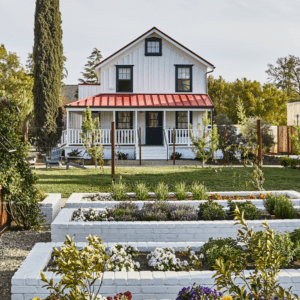 The U.S. lodging industry is forecast to achieve another all-time record occupancy level in 2016, but an increasing number of local markets are starting to show the effects of growing competition. According to the March to May 2016 edition of Hotel Horizons, CBRE Hotels’ Americas Research is projecting a year-end 2016 occupancy level of 65.7 percent, 20 basis points greater than the record level of occupancy achieved in 2015.
The U.S. lodging industry is forecast to achieve another all-time record occupancy level in 2016, but an increasing number of local markets are starting to show the effects of growing competition. According to the March to May 2016 edition of Hotel Horizons, CBRE Hotels’ Americas Research is projecting a year-end 2016 occupancy level of 65.7 percent, 20 basis points greater than the record level of occupancy achieved in 2015.CBRE Hotels’ Americas Research always cautions our clients to pay closest attention to local market conditions, as opposed to broad national trends. While the outlook for the overall U.S. lodging industry is solid for the next few years, we acknowledge that a growing number of local markets will begin to experience a decline in occupancy levels. This is the result of the emergence of new competition that heretofore has been kept under wraps.
In 2015, only seven of the 59 markets in the Hotel Horizons universe suffered a decline in occupancy. This number is forecast to increase to 29 in 2016 and 38 in 2017.
Declining levels of occupancy may cause some industry participants to sound the panic alarm. However, it is important to note that the underlying strength of the U.S. economy continues to generate the desire and need to travel. The demand for lodging accommodations is projected to expand in all 59 Hotel Horizons markets in both 2016 and 2017. Any hint of a slowdown can be attributed to the influence of the new supply, which is to be expected given where we are at in the lodging cycle.
Inflation
Despite the occupancy declines, most U.S. markets will continue to achieve occupancy levels well above their long-run averages in both 2016 and 2017. Accordingly, CBRE Hotels is forecasting that average daily room rates (ADRs) will increase on a national level in excess of five percent both this year and next. Locally, 24 of the 59 Hotel Horizons markets will enjoy ADR growth in excess of five percent in both 2016 and 2017
Given the lofty occupancy levels, the pendulum of pricing power remains tiled towards producers. Further providing a boost to room rates is an anticipated rise in the pace of inflation. In 2016, the Consumer Price Index (CPI) is expected to grow at three percent, and the core CPI at 1.9 percent.
There is a double-edge to the rising levels of employment and inflation. An increase in both of these metrics benefits lodging demand and pricing, but they also will put pressure on the amount hotels will have to pay for labor, goods, and services.
High occupancy levels do not always guarantee strong growth in ADR. Hotels in the cities of New York and Miami are forecast to achieve occupancy levels of 83.8 percent and 76.8 percent respectively in 2016, yet ADRs in these markets are projected to grow below the national average – 1.4 percent in New York and 4.0 percent in Miami. What these two markets have in common are increases in the supply of traditional hotel rooms greater than six percent, plus a significant supply of Airbnb units. A recent study by CBRE Hotels’ Americas Research found that the ratio of active Airbnb units to hotel rooms is greater than 10 percent in these cities.


To purchase a copy of the March – May 2016 editions of Hotel Horizons, please visit: https://store.pkfc.com/hotel-forecast-reports.














